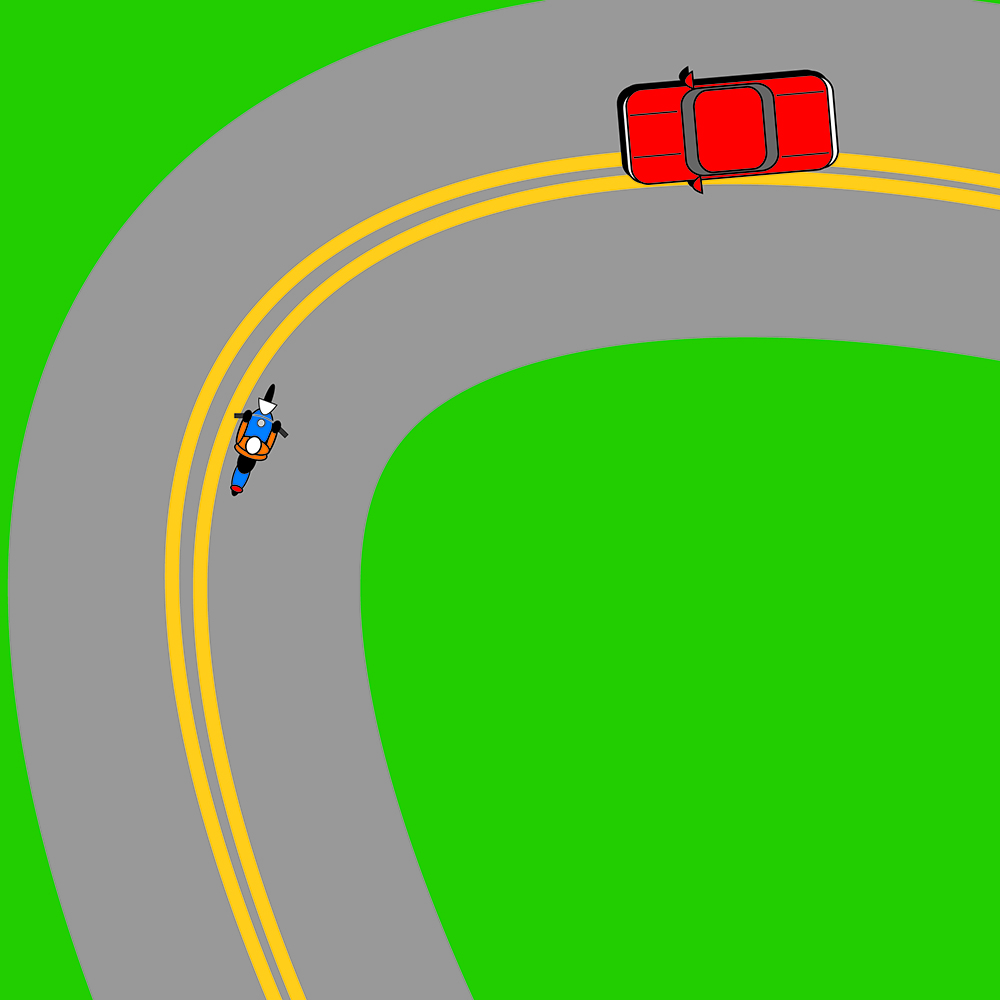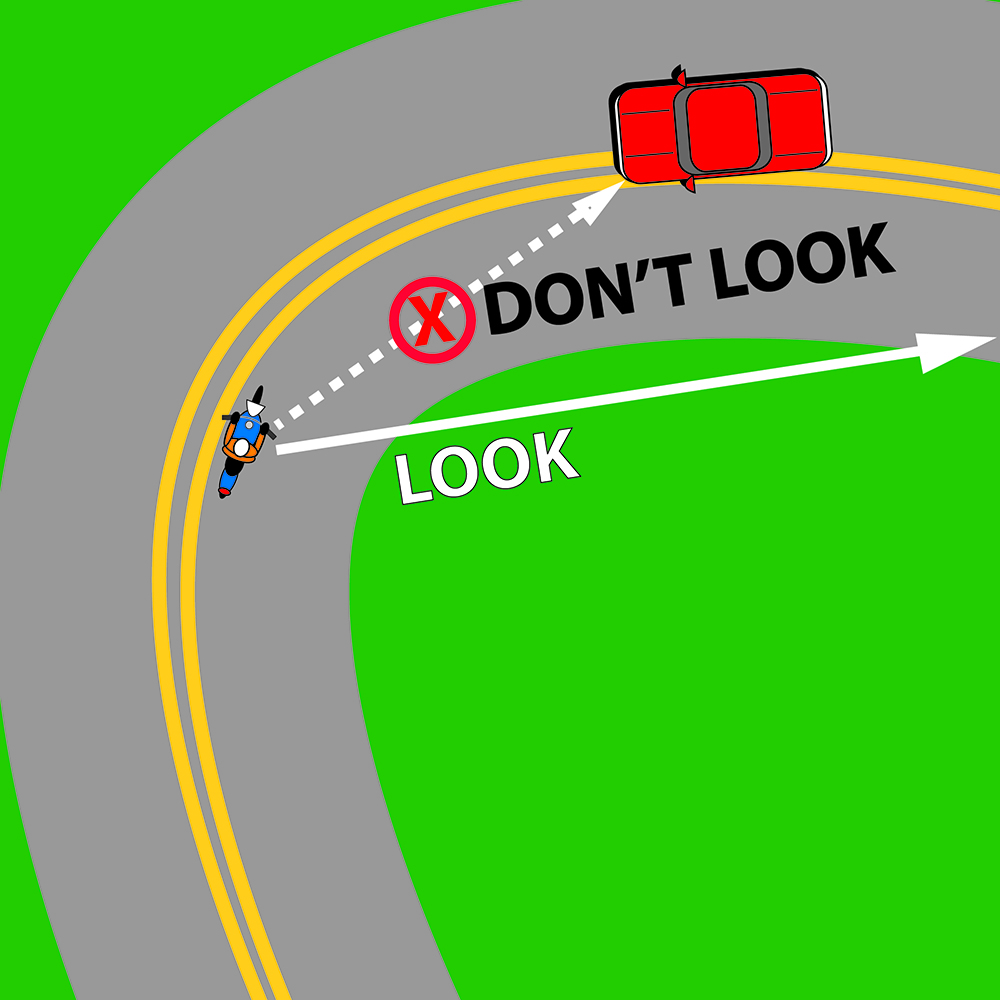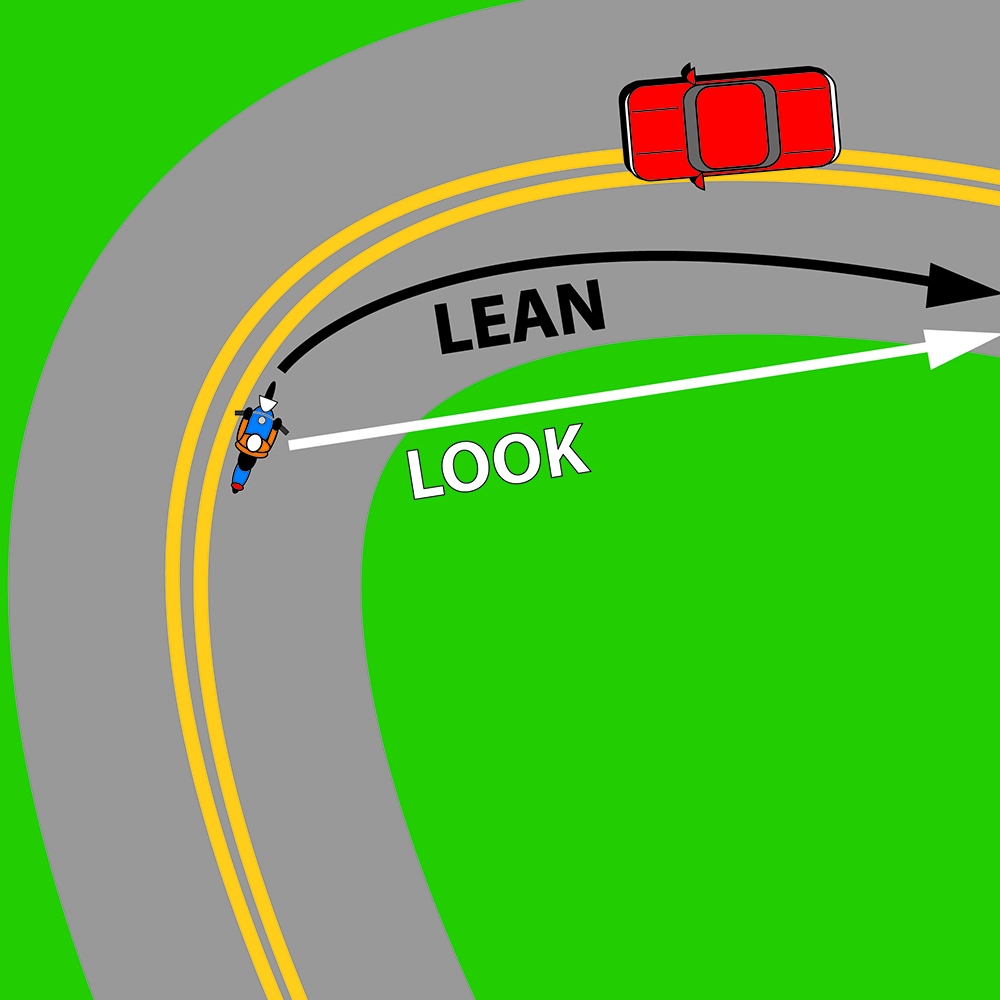Introduction
You are riding on a curving, two-lane road. You are traveling just below the speed limit. You round a right-hand curve and feel your bike begin to drift outward, with your wheels almost touching the centerline.
Suddenly, an oncoming car appears, straddling the centerline. You feel like a deer caught in the headlights.


The Wrong Response
Many riders freeze up in this situation. They chop the throttle and stare at the oncoming vehicle … and do little else. Also known as target fixation, it can easily lead to disaster: The bike tends to go where you look.
Don’t:
- Freeze
- Stare
Tip: Focus where you want to go – the turn’s exit, and not the oncoming vehicle!
The Right Response
The best response is to hold the throttle steady or roll off smoothly, focus your head and eyes where you want to go — the turn’s exit is your target, not the oncoming vehicle! — and lean the bike harder by counter steering (pressing forward on the inside handgrip) and tightening your line.
Do:
- Smooth throttle
- Look through the turn
- Counter steer
Tip: Lean the bike harder by counter steering and tightening your line.

The Reality
Running wide in a corner is the most common cause of motorcycle fatalities in Oregon. Even experienced riders fall into this trap if they’re not looking far enough ahead. It doesn’t matter whether it’s an oncoming car, a tighter turn than the rider expected or some other obstacle. When a rider suddenly decides they’re not going to make it, they often panic, look down and forget to steer through the turn.
When the road surface is good, a motorcycle should be able to negotiate a curve safely at its advisory speed limit — as long as the rider looks through the turn and counter steers to control path of travel.
If the concepts of target fixation or counter steering are unfamiliar to you, or if you have trouble with corners, Team Oregon recommends you seek help: Enroll in a training course and get some instruction and practice in these critical skills.